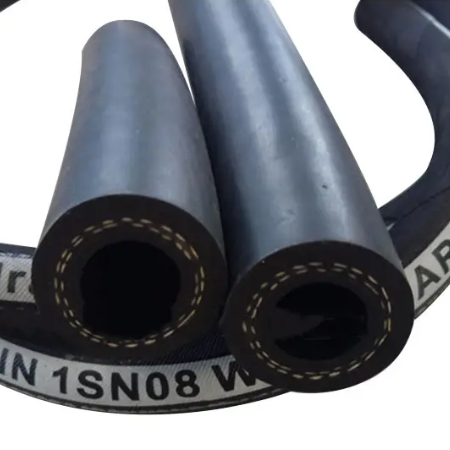335345435
Pro . 06, 2024 07:17 Back to list
Types of Hydraulic Hose Fittings and Their Suppliers in the Industry
Understanding Hydraulic Hose Fittings Types and Suppliers
Hydraulic systems are essential in various industries, facilitating the transfer of power and fluid through hoses and fittings. A crucial component of these systems is the hydraulic hose fittings, which connect hoses to pumps, valves, and other equipment. With numerous types available, it’s essential to understand their functions and the suppliers who provide them.
Types of Hydraulic Hose Fittings
Hydraulic hose fittings come in various styles and materials, tailored to different applications. Here are some of the most common types
1. NPT Fittings (National Pipe Thread) NPT fittings are used in many hydraulic applications due to their tapered design, which allows them to create a tight seal with the mating pipe. These fittings are often used in low-pressure systems but can also accommodate moderate pressures.
2. JIC Fittings (Joint Industrial Council) JIC fittings are recognizable by their 37-degree flare and are widely used due to their ability to handle higher pressures. They are designed to provide a reliable leak-free seal and are compatible with most hydraulic hoses.
3. BSP Fittings (British Standard Pipe) Similar to NPT fittings, BSP fittings are commonly used in European and some international markets. They include both parallel and tapered versions, with the tapered type providing a seal through deformation.
4. SAE Fittings (Society of Automotive Engineers) SAE fittings are standardized and generally designed for the automotive and heavy equipment industries. Like JIC fittings, they feature a 37-degree flare and are ideal for high-pressure applications.
5. Compression Fittings These fittings secure the hose with a compression ring, providing a strong hold. They are often used in applications where space is tight since they do not require additional nut or flare connections.
6. Push-On Fittings Designed for ease of installation, push-on fittings can be quickly attached to hoses without the need for clamps or special tools. They are commonly used in low-pressure applications and can simplify maintenance tasks.
7. Barbed Fittings Barbed fittings are used primarily in low-pressure applications. The barbs grip the hose tightly, and many times a clamp is applied to ensure that the hose remains secure.
hydraulic hose fittings types suppliers

Selecting the Right Supplier
Choosing a reliable supplier for hydraulic hose fittings is crucial to ensure system efficiency and safety. Here are some key considerations when selecting a supplier
1. Product Range A good supplier should offer a wide variety of fittings to meet diverse needs. Whether you require common NPT fittings or specialized ones, a comprehensive inventory is vital.
2. Quality Assurance Look for suppliers who adhere to industry standards and quality certifications. This ensures that the fittings are durable and reliable in high-pressure environments.
3. Technical Support Suppliers who provide expert advice and technical support can be invaluable, particularly for complex hydraulic systems. They can help with product selection and troubleshooting.
4. Customer Service Evaluate the supplier's customer service reputation. Quick response times and excellent support can greatly enhance your purchasing experience.
5. Competitive Pricing While cost should not be the only factor, finding a supplier who offers competitive prices can help you manage your budget effectively. Always compare prices across different suppliers.
6. Shipping and Delivery Options Timely delivery is often critical in operations. A supplier who can guarantee quick shipping and has efficient logistics will help minimize downtime.
Conclusion
Understanding the various types of hydraulic hose fittings and knowing how to select the right supplier are essential steps for any business relying on hydraulic systems. The correct fittings not only enhance the performance of the system but also ensure safety and longevity. By taking the time to research and choose high-quality fittings and a reliable supplier, businesses can significantly improve their operational efficiency, reduce costs, and maintain a safe working environment. As the hydraulic industry continues to evolve, keeping abreast of new technologies and product offerings will remain a vital part of maintaining a competitive edge.
-
SAE 100 R17 Black Smooth Cover Hydraulic Hose
NewsMar.07,2025
-
SAE 100 R17 Black Smooth Cover Hydraulic Hose
NewsMar.07,2025
-
SAE 100 R17 Black Smooth Cover Hydraulic Hose
NewsMar.07,2025
-
SAE 100 R17 Black Smooth Cover Hydraulic Hose
NewsMar.07,2025
-
SAE 100 R17 Black Smooth Cover Hydraulic Hose
NewsMar.07,2025
-
steel wire braided hydraulic hose
NewsMar.07,2025



